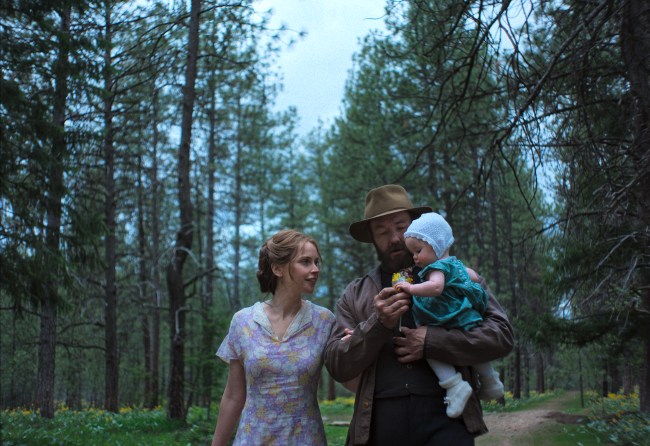Joel Edgerton Is a Logger in Sundance Hit
Introduction
The 2023 Sundance Film Festival has brought to light a plethora of significant narratives, but one that has captured the attention of audiences and critics alike is Joel Edgerton’s transformative role as a logger. In this gripping drama, Edgerton takes us through the life of a man wrestling with both his profession and personal demons. This article delves into the intricacies of Edgerton’s character, the film’s thematic undertones, and its resonance with contemporary issues related to masculinity, nature, and redemption.
The Story Behind the Logger
At the heart of this Sundance entry lies the story of Jack Avery, a logger entangled in the complexities of modern masculinity and societal expectation. Edgerton’s portrayal is raw and real, offering a glimpse into a world that is often romanticized or misunderstood.
Set against the backdrop of a small, rugged town that heavily relies on the logging industry, the film offers not just a character study, but a larger commentary on the changing American landscape. As the logging industry faces environmental scrutiny and economic uncertainty, Jack embodies the struggles of men who have historically derived their identity from their labor.
Joel Edgerton’s Remarkable Transformation
Joel Edgerton, known for his versatility, delivers a heart-wrenching performance that challenges the stereotype of the rugged macho figure. Instead, he presents a man burdened by the weight of tradition and the tug of change. Edgerton’s commitment to the role is evident — he underwent extensive physical training to embody the physicality required of a logger while also immersing himself in the emotional terrain of a character facing inner turmoil.
His transformation goes beyond mere physicality; it ventures into the realm of vulnerability. Edgerton infuses Jack with emotional depth, illustrating his struggles with familial expectations, relationships, and the ever-looming threat of economic instability.
Themes of Masculinity and Vulnerability
One of the standout aspects of this film is its exploration of masculinity. The logger’s identity is intrinsically tied to notions of strength and toughness. However, as Jack faces personal and professional challenges, the film subtly deconstructs these ideals. Instead of the archetypal portrayal of the unyielding male figure, viewers witness moments of vulnerability that evoke empathy.
Director’s choices in framing scenes further amplify this narrative. We see Jack breaking down during a quiet moment, a scene that defies traditional portrayals of masculinity and offers a more holistic look at what it means to be a man in today’s world. This nuanced portrayal resonates deeply and allows for a fresh discussion on the emotional spectrum men experience.
The Environmental Message
Interestingly, the film does not shy away from addressing the larger environmental implications of logging. While Jack’s world is deeply rooted in his work, the narrative prompts us to consider the ethical dilemmas at the heart of the logging industry. There are moments where Jack grapples with his role in the destruction of nature, causing viewers to reflect on sustainability versus tradition.
By weaving environmental themes into Jack’s personal journey, the film elevates its narrative beyond individual struggle, positioning it within a larger context about the future of work, responsibility, and ecological stewardship. The film becomes a lens through which we examine our relationship with nature and the industries that shape our world.
The Importance of Community
Community plays a pivotal role in the film, acting as both a supporting pillar and a source of tension for Jack. His interactions with fellow loggers, family, and local residents offer insight into the communal aspect of rural life. The camaraderie shared among the loggers underscores the significance of connection in the face of hardship.
However, the community is not merely supportive; it also represents the expectations and judgments of a close-knit society. As Jack navigates his transformation, he confronts the community’s often rigid standards about masculinity, work, and success. This aspect of the narrative adds layers of conflict, prompting viewers to ponder questions about individual desires versus collective expectations.
Cinematic Techniques
The film’s cinematography deserves praise for its stunning portrayal of the natural landscape and the grueling nature of logging. Shot on location in rugged terrain, the visuals enhance the storytelling, compelling the audience to immerse themselves in the world of Jack Avery. The use of natural lighting captures the raw beauty of the wilderness yet contrasts sharply with the harsh reality of logging.
Moreover, the score — subtle yet evocative — adds an emotional depth that complements Edgerton’s performance. These cinematic techniques work hand in hand to create a visceral experience that allows viewers to feel the weight of the logging industry, both physically and emotionally.
Conclusion
Joel Edgerton’s portrayal of a logger in this Sundance hit is much more than just a role; it’s a commentary on the modern male experience, the complexities of labor, and our relationship with the environment. By tackling themes of masculinity, community, and ecological responsibility, the film resonates on multiple levels, inviting discussions that extend beyond the silver screen.
As we continue to grapple with the evolving nature of work and identity in an ever-changing world, Edgerton’s character serves as a poignant reflection of the struggles many face. This Sundance entry stands out not only as a tale of a logger but as a narrative that challenges conventions and compels us to rethink what it means to be human in the 21st century. Whether you’re a fan of Edgerton’s previous work or simply a lover of thought-provoking cinema, this film promises to leave an indelible mark on its audience.





